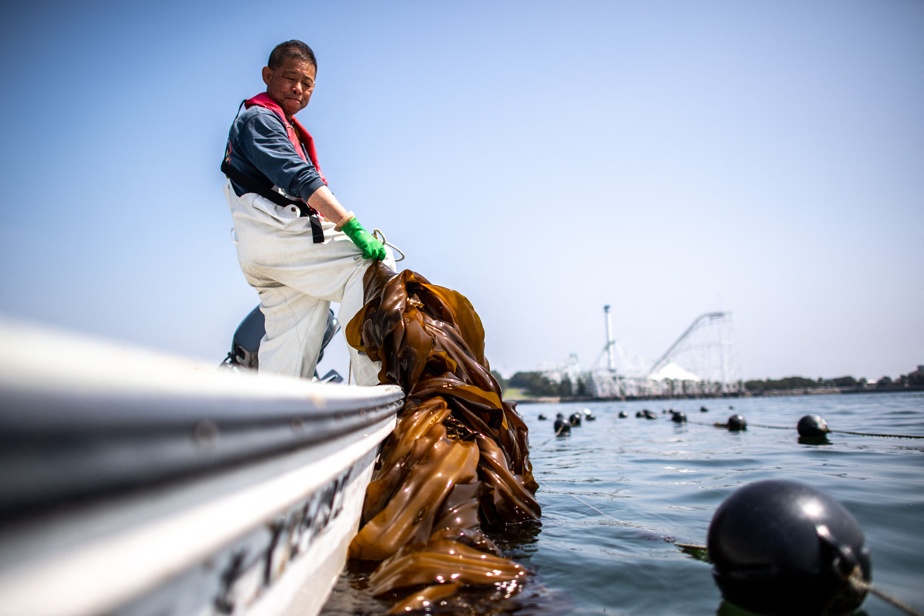(Yokohama) Seaweed is a staple in Japan, but the “kombu” – a variety of kelp – carried in fisherman Ryoichi Kigawa’s boat is also attracting attention for its potential as an ecological super-crop.
The search for new uses for this marine plant – from carbon absorption to reducing methane emissions from livestock – is booming, and several countries are taking inspiration from Asian seaweed farming expertise to develop their own industries.
Most of the kombu that Mr. Kigawa and his colleagues grow at the port in Yokohama, near Tokyo, is processed for use in broth or in salads.
But a part is also intended for the projects of the small company Sachiumi Heroes whose objective is to “preserve the ecosystem and fight against global warming”, explains its founder, Tatsunori Tomimoto.
“The Japanese have been consuming seaweed for a long time, but we never really considered cultivating it from an environmental or ecological point of view,” he adds.
It only takes four months for the kombu to be harvested. Once torn, washed and dried, it is cut up and then sold.
“Huge potential”
With studies showing that seaweed can improve plant growth, kombu is also used as an organic fertilizer, and at his tea plantation near Saitama, north of the capital, Ryutaro Matoba says he is eager to see the benefits on his crops.
“It will take two or three years before we see the effects of seaweed fertilizer on the quality of the tea,” he says. “But I can already feel the difference when I hit the ground, it feels softer.”
Sachiumi Heroes seaweed is also used by spa establishments or to make bath salts.
The company also supplies kombu to an aquarium to feed sea turtles, or to a cattle farm.
A study carried out in 2021 by the University of California showed that replacing part of the diet of cows with a type of red algae made it possible to reduce their methane emissions by more than 80%.
According to the Food and Agriculture Organization of the United Nations (FAO), the global seaweed industry doubled in size between 2005 and 2015.
The majority of production takes place in Asia, particularly China and Indonesia, where seaweed is cultivated on an industrial scale for the manufacture of products such as gels and food thickeners.
But the UK has “enormous potential” to produce more seaweed for human and animal consumption, says Henry Alexander, a British researcher who studies these marine plants in Japan, South Korea and Canada.
According to him, this would reduce the pressure on agricultural land and create jobs, while providing environmental benefits, such as carbon absorption or the de-acidification of the oceans.
“Use common sense”
Opportunities also include carbon offset projects, which take advantage of algae’s ability to quickly absorb CO2.
Despite the enthusiasm of governments and corporations to fund such projects, scientists warn, however, that the oceans may not have enough capacity to remove significant amounts of CO2 present in the air.
In addition, the increase in ocean temperature has already made seaweed farming more difficult in countries such as Japan, which are now turning to more resistant strains.
Simon Funge-Smith, senior official in charge of fisheries at the FAO, warns against an excessive enthusiasm for algae and recalls the need to show a little “common sense”.
However, he sees potential in breeding offshore mass and expects this field to continue to grow.
“We only breed a handful of species among hundreds of others,” he notes. “This is an area where there is a lot of research going on, a lot of interest in trying to find uses, we don’t yet know what can happen. »
